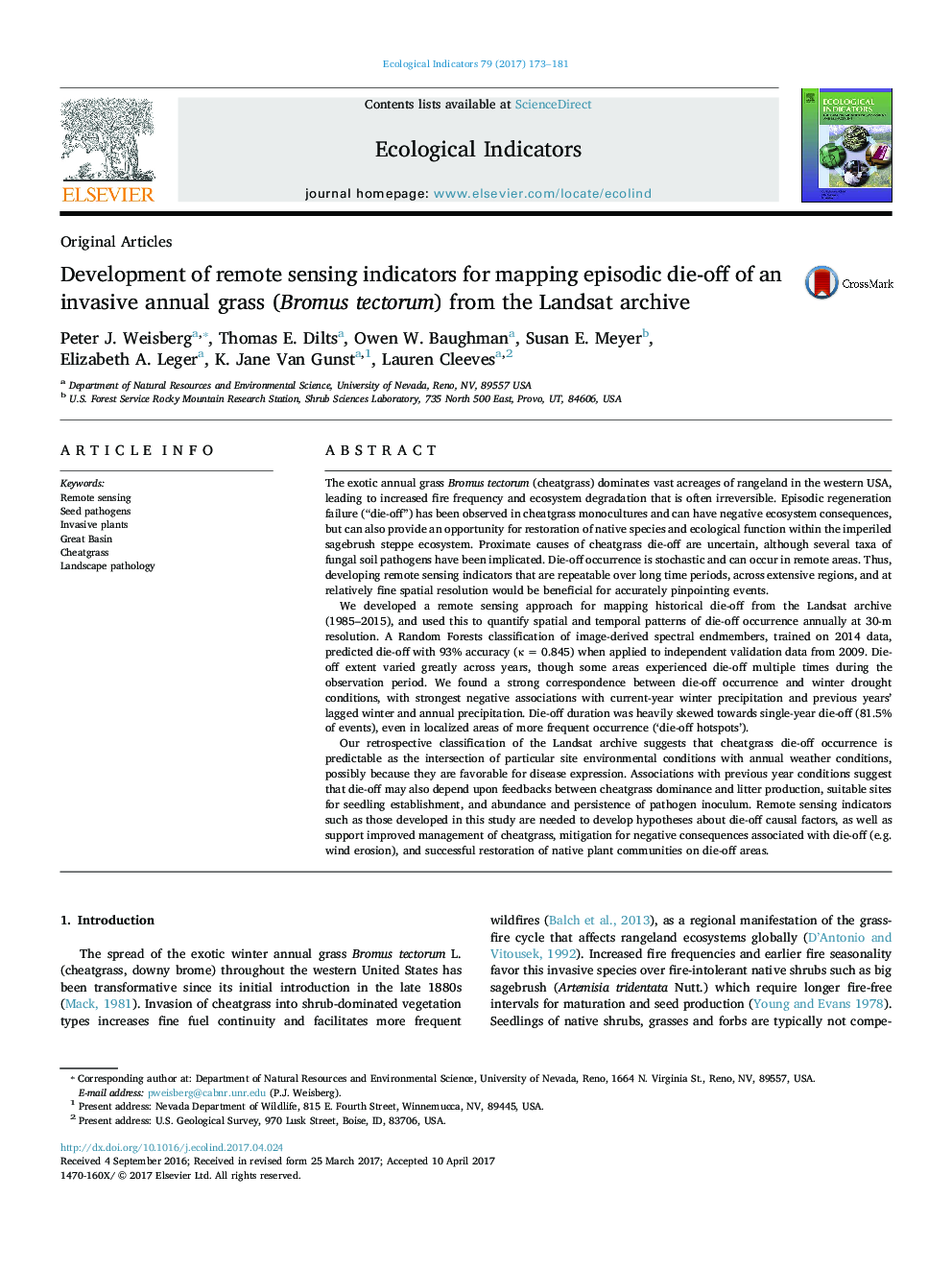| کد مقاله | کد نشریه | سال انتشار | مقاله انگلیسی | نسخه تمام متن |
|---|---|---|---|---|
| 5741765 | 1617123 | 2017 | 9 صفحه PDF | دانلود رایگان |

- We developed a Landsat remote sensing method for mapping cheatgrass die-off that showed excellent classification accuracy (> 90%).
- We quantified die-off duration, spatial pattern and climate relationships.
- Die-off was heavily skewed towards small patches and single-year events.
- Die-off was strongly associated with winter drought conditions.
- Remote sensing indicators are needed for die-off detection and ecological restoration.
The exotic annual grass Bromus tectorum (cheatgrass) dominates vast acreages of rangeland in the western USA, leading to increased fire frequency and ecosystem degradation that is often irreversible. Episodic regeneration failure (“die-off”) has been observed in cheatgrass monocultures and can have negative ecosystem consequences, but can also provide an opportunity for restoration of native species and ecological function within the imperiled sagebrush steppe ecosystem. Proximate causes of cheatgrass die-off are uncertain, although several taxa of fungal soil pathogens have been implicated. Die-off occurrence is stochastic and can occur in remote areas. Thus, developing remote sensing indicators that are repeatable over long time periods, across extensive regions, and at relatively fine spatial resolution would be beneficial for accurately pinpointing events.We developed a remote sensing approach for mapping historical die-off from the Landsat archive (1985-2015), and used this to quantify spatial and temporal patterns of die-off occurrence annually at 30-m resolution. A Random Forests classification of image-derived spectral endmembers, trained on 2014 data, predicted die-off with 93% accuracy (κ = 0.845) when applied to independent validation data from 2009. Die-off extent varied greatly across years, though some areas experienced die-off multiple times during the observation period. We found a strong correspondence between die-off occurrence and winter drought conditions, with strongest negative associations with current-year winter precipitation and previous years' lagged winter and annual precipitation. Die-off duration was heavily skewed towards single-year die-off (81.5% of events), even in localized areas of more frequent occurrence ('die-off hotspots').Our retrospective classification of the Landsat archive suggests that cheatgrass die-off occurrence is predictable as the intersection of particular site environmental conditions with annual weather conditions, possibly because they are favorable for disease expression. Associations with previous year conditions suggest that die-off may also depend upon feedbacks between cheatgrass dominance and litter production, suitable sites for seedling establishment, and abundance and persistence of pathogen inoculum. Remote sensing indicators such as those developed in this study are needed to develop hypotheses about die-off causal factors, as well as support improved management of cheatgrass, mitigation for negative consequences associated with die-off (e.g. wind erosion), and successful restoration of native plant communities on die-off areas.
Journal: Ecological Indicators - Volume 79, August 2017, Pages 173-181